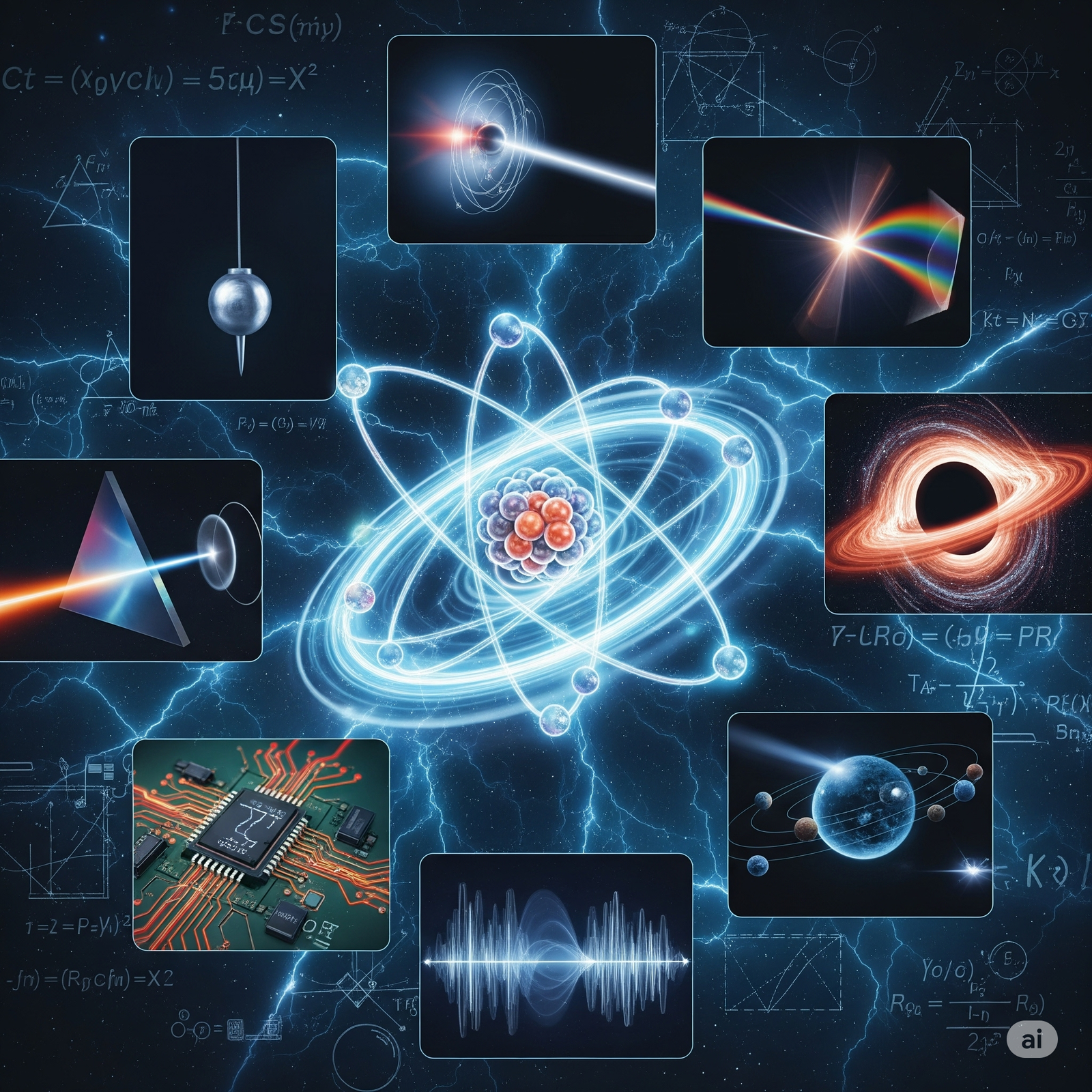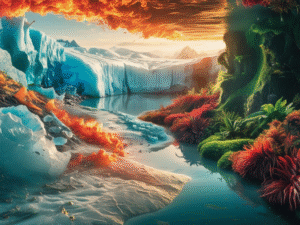Table of Contents
ToggleIntroduction
The environment and science are two interconnected domains that have defined the trajectory of human civilization. Science helps us understand the complexities of the natural world, while the environment provides the resources and ecosystems that sustain life. Together, they form a cycle of knowledge, application, and preservation. As we progress in the 21st century, the relationship between science and the environment has become even more significant due to challenges such as climate change, biodiversity loss, deforestation, pollution, and resource scarcity. At the same time, scientific advancements offer innovative solutions that can mitigate environmental degradation and promote sustainable living.
This article explores the dynamic relationship between environment and science, their role in shaping human society, and the challenges and opportunities that lie ahead.
Understanding the Environment
The term environment refers to the natural world and all the living and non-living elements that surround us. It encompasses air, water, soil, flora, fauna, and ecosystems. The environment is not just a backdrop for human activities; it is the foundation of survival.
Some of its essential functions include:
Providing Resources – Water, food, minerals, and raw materials for survival and industry.
Maintaining Life Support Systems – Oxygen from trees, pollination by insects, and nutrient cycles in soil.
Absorbing Waste – Nature has an inherent capacity to recycle organic waste.
Aesthetic and Cultural Value – Mountains, rivers, forests, and wildlife enrich human culture and spirituality.
However, the environment is fragile and vulnerable to overexploitation and pollution, making its preservation a top global priority.
Role of Science in Understanding the Environment
Science plays a crucial role in unraveling the mysteries of the environment. Through systematic observation, experimentation, and analysis, it helps us comprehend how ecosystems function and how human activities impact them.
Environmental Monitoring
Scientific tools such as satellites, sensors, and drones allow us to monitor deforestation, desertification, air quality, and ocean health. For example, satellite imaging by NASA and ISRO helps track melting glaciers and rising sea levels.
Climate Science
The study of atmospheric changes through meteorology and climatology provides critical insights into global warming, greenhouse gas emissions, and extreme weather events.
Ecological Research
Science explores interdependencies among organisms, food chains, and biodiversity, enabling us to design conservation strategies.
Pollution Control
Chemistry and biology provide solutions to treat wastewater, manage solid waste, and develop biodegradable alternatives to plastics.
Thus, science acts as both a diagnostic and therapeutic tool for environmental issues.
Human Impact on the Environment
Over the centuries, industrialization, urbanization, and technological advancements have drastically altered the environment. While science has contributed to human progress, it has also inadvertently created challenges.
Deforestation and Habitat Loss
The clearing of forests for agriculture, infrastructure, and logging has led to loss of biodiversity and disruption of ecological balance.
Air and Water Pollution
Industrial smoke, vehicle emissions, and untreated effluents degrade air and water quality, threatening both human health and wildlife.
Climate Change
Burning fossil fuels has increased greenhouse gases, causing global warming, rising sea levels, and shifting weather patterns.
Soil Degradation
Overuse of fertilizers, pesticides, and intensive farming reduces soil fertility and pollutes groundwater.
Plastic Pollution
Single-use plastics have choked rivers, oceans, and landfills, creating long-term ecological hazards.
In short, human progress without environmental sensitivity leads to imbalance and destruction.
Scientific Solutions to Environmental Challenges
The strength of science lies not just in identifying problems but also in providing innovative solutions. Some key areas include:
Renewable Energy
Solar, wind, hydro, and geothermal energy are reducing dependence on fossil fuels, lowering carbon footprints, and creating sustainable alternatives.
Green Technology
Electric vehicles, energy-efficient appliances, and green buildings are minimizing environmental damage.
Waste Management and Recycling
Advances in biotechnology help convert organic waste into biogas or compost. Modern recycling technologies reclaim plastic, glass, and metals for reuse.
Conservation Biology
Techniques like captive breeding, gene banking, and habitat restoration protect endangered species and biodiversity.
Geoengineering
Though controversial, scientific methods such as carbon capture and solar radiation management are being explored to combat climate change.
Artificial Intelligence and Big Data
AI-driven models predict natural disasters, track deforestation, and optimize energy use, contributing to smarter environmental management.
Importance of Environmental Science
Environmental science is an interdisciplinary field that merges biology, chemistry, physics, geology, and social sciences to study human-environment interactions. It highlights sustainable development—the idea that economic growth must not compromise environmental health.
Some key contributions of environmental science include:
Identifying causes of environmental degradation.
Designing policies for pollution control and resource management.
Educating communities about sustainable lifestyles.
Linking global issues like climate change with local action plans.
Global Environmental Issues and Science’s Role
Climate Change
Science has provided evidence for rising global temperatures, melting ice caps, and sea-level rise. It also offers renewable energy solutions and climate models for future planning.
Loss of Biodiversity
Conservation science develops strategies like biosphere reserves, gene sequencing, and wildlife corridors to protect species.
Water Scarcity
Scientific innovations like desalination plants, rainwater harvesting, and efficient irrigation techniques help tackle water shortages.
Air Quality Degradation
Air quality monitoring systems and cleaner technologies such as hydrogen fuel cells aim to reduce pollution levels.
Ocean Pollution
Science develops bioremediation techniques, ocean-cleaning robots, and biodegradable alternatives to plastics.
Environment and Science in India
India, with its rich biodiversity and vast population, faces unique environmental challenges. Rapid urbanization and industrialization have increased pollution and resource depletion. However, science and technology have also provided solutions:
ISRO satellites monitor crop health, forest cover, and climate change impacts.
National Solar Mission promotes renewable energy.
River rejuvenation projects use biotechnology to clean rivers like the Ganga.
Electric mobility programs reduce air pollution in urban areas.
Thus, India’s scientific community plays a pivotal role in balancing development with environmental preservation.
Ethical and Philosophical Dimensions
The relationship between environment and science also raises ethical questions. Should humans prioritize economic growth over environmental preservation? Should advanced nations bear more responsibility for climate change? These issues highlight the need for global cooperation and shared responsibility.
Philosophically, the environment is not merely a resource but a living system that demands respect. Ancient cultures, including Indian traditions, considered nature sacred, emphasizing coexistence rather than exploitation. Modern science, combined with traditional wisdom, can foster a balanced approach.
Future Prospects: Science for a Sustainable Environment
The future of our planet depends on how effectively science is harnessed for environmental protection. Emerging fields hold great promise:
Nanotechnology for water purification and pollution control.
Synthetic biology for creating eco-friendly materials.
Space technology for climate monitoring.
Circular economy models supported by science to reduce waste.
The United Nations’ Sustainable Development Goals (SDGs) provide a framework for integrating science and environment into global development strategies.
Conclusion
The environment and science are inseparable forces that shape human existence. While the environment sustains life, science enables us to understand, protect, and restore it. Human progress must not come at the cost of environmental degradation. Instead, it should aim at harmony between development and ecological preservation.
As we face unprecedented challenges like climate change, pollution, and resource scarcity, science provides both the tools and the knowledge to build a sustainable future. However, it requires collective responsibility, ethical choices, and global cooperation. The path forward lies in recognizing that protecting the environment is not merely an obligation but a necessity for the survival of humanity itself.
In the words of environmentalists, we have not inherited the Earth from our ancestors; we have borrowed it from our children. Science must guide us in returning it to them in a state of balance and beauty.



